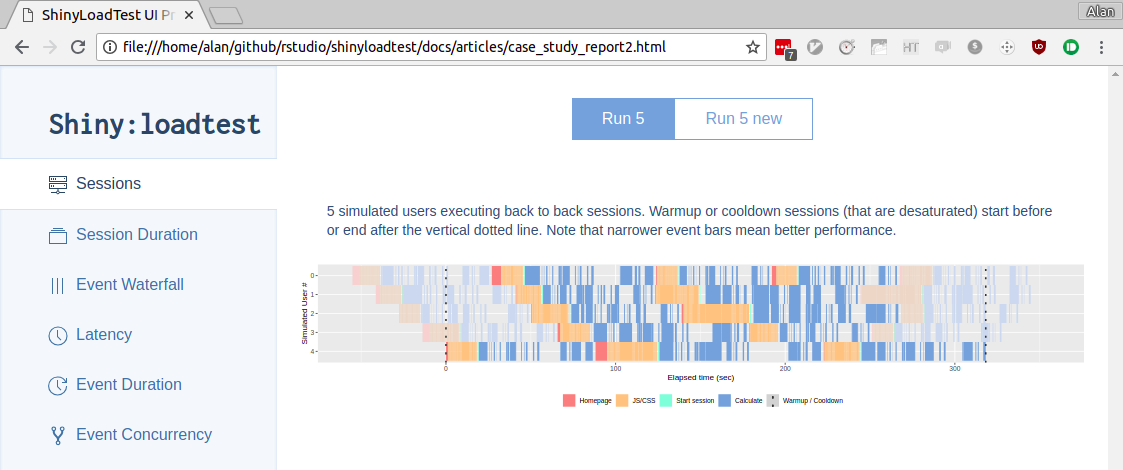The hardware and bandwidth for this mirror is donated by METANET, the Webhosting and Full Service-Cloud Provider.
If you wish to report a bug, or if you are interested in having us mirror your free-software or open-source project, please feel free to contact us at mirror[@]metanet.ch.
The shinyloadtest
package and the accompanying shinycannon
command line tool make it possible to load test
deployed Shiny apps. Load testing helps developers and administrators
estimate how many users their application can support. If an application
requires tuning, load testing and load test result analysis can be used
to identify performance bottlenecks and to guide changes to
infrastructure, configuration, or code.
Scientific load testing helps put to rest the common misconception that “Shiny doesn’t scale”. As rstudio::conf(2018) Sean Lopp presented on Scaling Shiny which shows how to to horizontally scale an app to handle tens of thousands of users.
To perform a load test you’ll need two pieces of software:
shinyloadtest is an R package used to generate
recordings and analyze results. You should install it on your
development machine with
install.packages("shinyloadtest").shinycannon is a command-line used to replay recordings
in parallel. You can install it on your development machine for testing,
but for best results we recommend installing it on a server, and
preferably not the one the application under test is also on. See installation
instructions for operating specific install instructions..The process for load testing a Shiny application consists of three steps:
Rinse and repeat as necessary. Each step is described below.
Record a session using shinyloadtest::record_session(),
which takes the URL of the deployed application as an
argument:
shinyloadtest::record_session("https://shinyapp.example.com/")Running the function will open a browser displaying the app. Once
open, interact with the application as a typical user might then close
the browser. After closing the app, a file (recording.log
by default) will be created that contains a recording of the session.
This recording will serve as the basis for the load test.
If your application requires authentication, consult the authentication article. Also be aware that certain Shiny features are not compatible with shinyloadtest.
With the recording in hand, we’re ready to run the load test. The
actual test is conducted outside of R using the shinycannon
command-line tool. You can run it using your system’s terminal or
console program, or you can run it from the RStudio IDE’s terminal tab.
A typical run looks like this:
shinycannon recording.log https://shinyapp.example.com/ --workers 5 --loaded-duration-minutes 2 --output-dir run1(On Windows, you will need to replace “shinycannon” with
java -jar shinycannon-VERSION.jar.)
See the shinycannon article for details.
Now we can analyse our results by reading the data into
shinyloadtest::load_runs() and create a report with
shinyloadtest_report():
df <- shinyloadtest::load_runs("run1")
shinyloadtest::shinyloadtest_report(df, "run1.html")This self contained html report will be opened in your browser for inspection. For further analysis explanation, please visit Analysing load test logs.

These binaries (installable software) and packages are in development.
They may not be fully stable and should be used with caution. We make no claims about them.